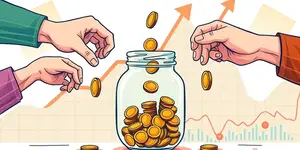Since ancient times, precious metals have held a unique place in human civilization. From ornamental objects to mediums of exchange, these elements have endured as historical role as stores of value and symbols of wealth. In an era of rapid economic change and uncertainty, gold, silver, platinum, and palladium continue to attract investors seeking stability. This article explores their defining characteristics, examines recent performance, and outlines how they can fortify modern portfolios against inflation, market volatility, and geopolitical turmoil.
Today, investors face a landscape where central banks, governments, and markets evolve at breakneck speed. In such times, the tangible security of metals creates a psychological anchor, empowering individuals to maintain confidence in their financial journey. This reassurance often distinguishes metals from intangible assets and complex derivatives.
Understanding Precious Metals
Precious metals are rare, naturally occurring metallic elements prized for scarcity, durability, and liquidity. Gold stands at the forefront, renowned for its association with monetary assets and price stability. Silver bridges investment demand and industrial use, particularly in electronics and solar technology. Platinum and palladium, though less familiar to retail investors, serve critical roles in automotive catalytic converters and specialized industrial processes.
Their value stems not only from practical applications but also from cultural and economic trust built over millennia. Investors often turn to these commodities as anchors when mainstream markets wobble, relying on their intrinsic worth rather than promises of fiat currencies.
Beyond investment, these metals possess unique physical attributes. Gold resists corrosion and tarnish, silver boasts the highest electrical conductivity, platinum endures extreme temperatures, and palladium offers remarkable catalytic properties. Geographically, deposits are concentrated in a handful of regions, making mining output sensitive to political and environmental policies.
The Historic Performance of Gold and Silver
In the first half of 2025, gold’s ascent was nothing short of remarkable. A surge of 25.9% propelled prices beyond $3,300 per ounce by June, marking five all-time highs in April alone. Silver mirrored this momentum, rising nearly 25% to trade around $38 per ounce, its loftiest level in a decade.
These gains outpaced most commodities, reflecting a flight toward safe assets amid global uncertainty. Forecasts suggest gold may close the year near $3,400 and approach $3,500 in 2026, underpinning its status as a mature safe haven and hedge across diverse economic environments. Meanwhile, silver’s industrial narrative—highlighted by persistent demand from solar panel production and electronics—supports continued market tightness.
Geopolitical and Macroeconomic Drivers
Precious metals thrive during episodes of deteriorating geopolitical and macro risks. Recent conflicts in the Middle East, tensions between major powers, and lingering trade disputes have spurred safe-haven flows into gold and silver. A weakening US dollar, expanding fiscal deficits, and looming interest rate cuts further fuel investor appetite.
Central banks play a pivotal role as well. From 2021 through 2025, global institutions purchased more gold than in the prior two decades combined, a trend driven by record central bank purchases of gold and a strategic shift away from dollar reliance. These purchases bolster prices and signal enduring confidence in gold as a reserve asset.
- Geopolitical crises and military tensions
- Inflation outpacing real yields
- Expanding government debt and deficits
- Central bank diversification from fiat currencies
Supply, Demand, and Market Dynamics
Supply and demand fundamentals reinforce the case for precious metals. Gold supply growth remains modest, with mining output struggling to keep pace with rising investment and reserve buying. Silver’s market is tighter, enduring seven consecutive annual supply deficits as mine production slipped 7% since 2016. With industrial usage accounting for 59% of total silver demand, inventories stand at multi-year lows.
Platinum and palladium exhibit more specialized market profiles. Their prices hinge on automotive sector health and emissions regulations, which can decouple them from safe-haven narratives when industrial cycles shift. Thus, while they offer potential upside, they may not provide the same consistent hedge as gold.
Strategic Portfolio Roles
Incorporating precious metals can enhance portfolio resilience through diversification and long-term resilience benefits. Historically, gold exhibits low or negative correlation with equities, cushioning losses during market sell-offs. Silver can amplify gains when risk sentiment shifts, though with greater volatility. Investors often allocate a modest 5%–10% of assets to metals, balancing potential returns against the absence of dividends or bond-like yields.
- Hedge against unexpected inflation spikes
- Buffer during stock market downturns
- Polish portfolio liquidity with exchange-traded options
- Preserve wealth across political regimes
Challenges and Considerations
Despite their merits, precious metals come with caveats. They generate no income through dividends or interest, making them passive holdings. Price movements can be volatile, especially in the short term, and external factors like rising real yields or a strong dollar can trigger pullbacks.
Industrial metals like silver, platinum, and palladium intertwine with economic cycles. A slowdown in manufacturing or auto production could dampen demand, leading to sharper corrections than gold. Moreover, prolonged deflationary pressures or sustained hikes in real rates may undermine safe-haven appeal.
Investors must also weigh storage and insurance expenses, which can erode returns over time. Counterparty risk arises with paper or digital gold products if issuers cannot deliver physical metal on demand. Additionally, evolving technologies like central bank digital currencies may influence future demand dynamics.
Conclusion
As investors navigate an unpredictable global landscape, precious metals remain a time-tested refuge. Their blend of scarcity, liquidity, and cultural trust offers protection when traditional assets falter. While gold shines as the premier defensive asset, silver, platinum, and palladium add nuance through industrial exposure and growth potential.
By understanding market drivers, supply constraints, and strategic roles, investors can harness these metals to safeguard wealth and seize opportunities. In a world of shifting policies and upheavals, the legacy of precious metals endures, offering an enduring bulwark against uncertainty.
Ultimately, allocating a portion of capital to precious metals requires careful planning. Investors should consider physical holdings, reputable ETFs, or allocated accounts, balancing convenience, cost, and security. By adopting a disciplined, long-term approach, precious metals can become a steady companion through financial storms.
References
- https://www.usfunds.com/resource/precious-metals-crushed-their-commodities-peers-in-the-first-half-of-2025/
- https://www.tandfonline.com/doi/full/10.1080/10971475.2025.2529647?src=
- https://sprott.com/insights/silver-investment-outlook-mid-year-2025/
- https://www.home.saxo/learn/guides/investment-theme/gold-silver-and-platinum-are-precious-metals-a-safe-haven-investment
- https://www.vaneck.com/us/en/blogs/natural-resources/safe-haven-demand-strengthens-commodities/
- https://www.investmentexecutive.com/news/research-and-markets/gold-still-a-safe-haven-in-a-crazy-world/
- https://www.kitco.com/news/article/2025-07-01/are-gold-silver-and-platinum-effective-safe-haven-investments-2025-saxo










